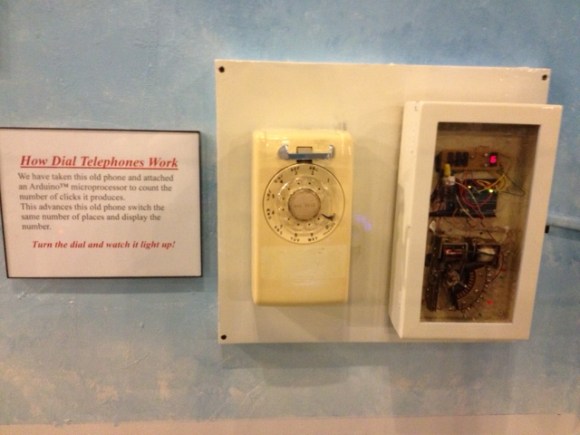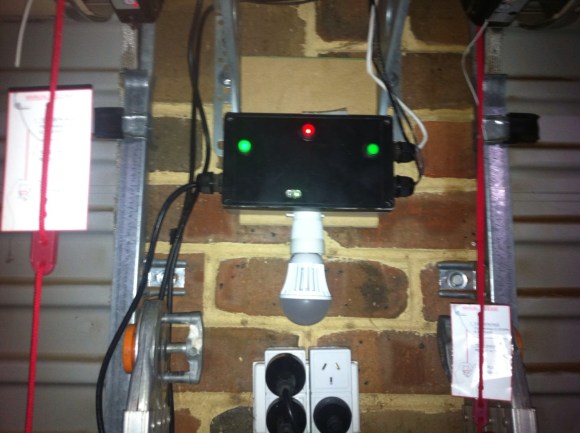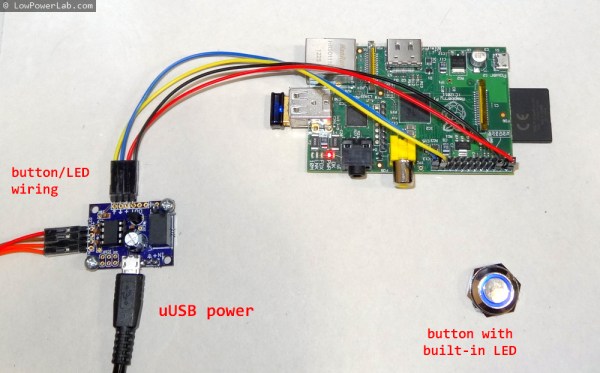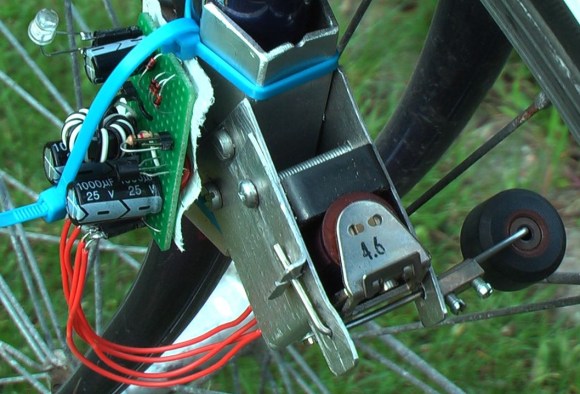 [David Burroughs] wrote in to share this dial telephone museum exhibit he built and we’re glad he did because we love interactive museum hacks. He mentions that it’s not really tied to the theme of the Roads and Rails Museum in which it’s installed. But when we think of railroad history we also think of telegraph. And that’s just a hop, skip, and a jump from telephones.
[David Burroughs] wrote in to share this dial telephone museum exhibit he built and we’re glad he did because we love interactive museum hacks. He mentions that it’s not really tied to the theme of the Roads and Rails Museum in which it’s installed. But when we think of railroad history we also think of telegraph. And that’s just a hop, skip, and a jump from telephones.
The display allows museum goers to play with the rotary dial on the phone. The box next two it contains a 10-position relay increment switch. So each pulse from the dial increments the switch. There’s a satisfying click, a moving arm, and different colored LEDs which highlight the inner workings. An Arduino board monitors the phone, displaying the dialed number on a seven segment display then incrementing the relay.
We figure the interesting part is to see that telephony used to use mechanical switching like this. But the video below includes a story about the kid who asked how you carried this phone around. This brings to mind the phrase “hang up the phone”, which doesn’t have the same literal meaning it used to.















